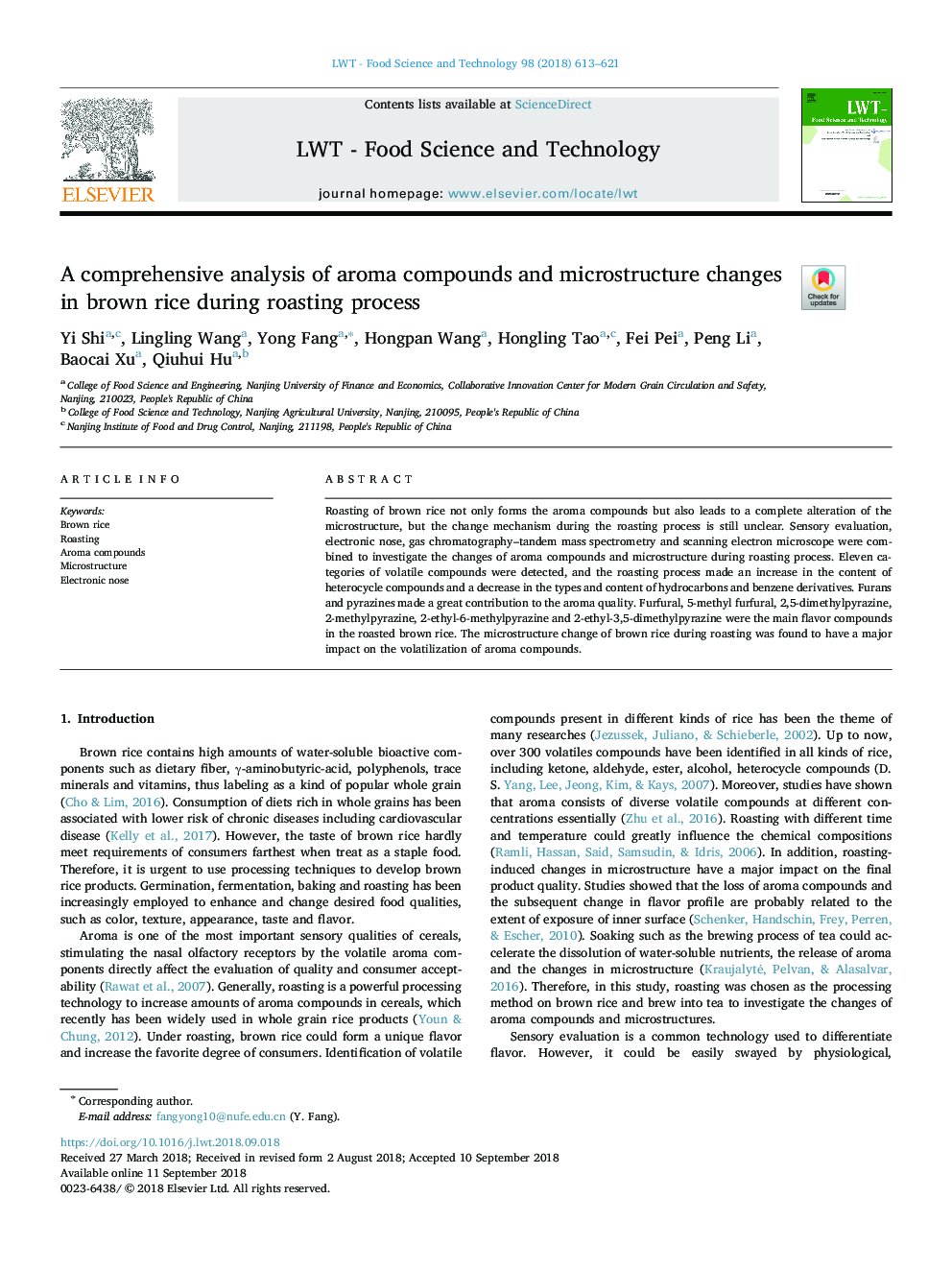| Article ID | Journal | Published Year | Pages | File Type |
|---|---|---|---|---|
| 11032609 | LWT - Food Science and Technology | 2018 | 9 Pages |
Abstract
Roasting of brown rice not only forms the aroma compounds but also leads to a complete alteration of the microstructure, but the change mechanism during the roasting process is still unclear. Sensory evaluation, electronic nose, gas chromatography-tandem mass spectrometry and scanning electron microscope were combined to investigate the changes of aroma compounds and microstructure during roasting process. Eleven categories of volatile compounds were detected, and the roasting process made an increase in the content of heterocycle compounds and a decrease in the types and content of hydrocarbons and benzene derivatives. Furans and pyrazines made a great contribution to the aroma quality. Furfural, 5-methyl furfural, 2,5-dimethylpyrazine, 2-methylpyrazine, 2-ethyl-6-methylpyrazine and 2-ethyl-3,5-dimethylpyrazine were the main flavor compounds in the roasted brown rice. The microstructure change of brown rice during roasting was found to have a major impact on the volatilization of aroma compounds.
Related Topics
Life Sciences
Agricultural and Biological Sciences
Food Science
Authors
Yi Shi, Lingling Wang, Yong Fang, Hongpan Wang, Hongling Tao, Fei Pei, Peng Li, Baocai Xu, Qiuhui Hu,
